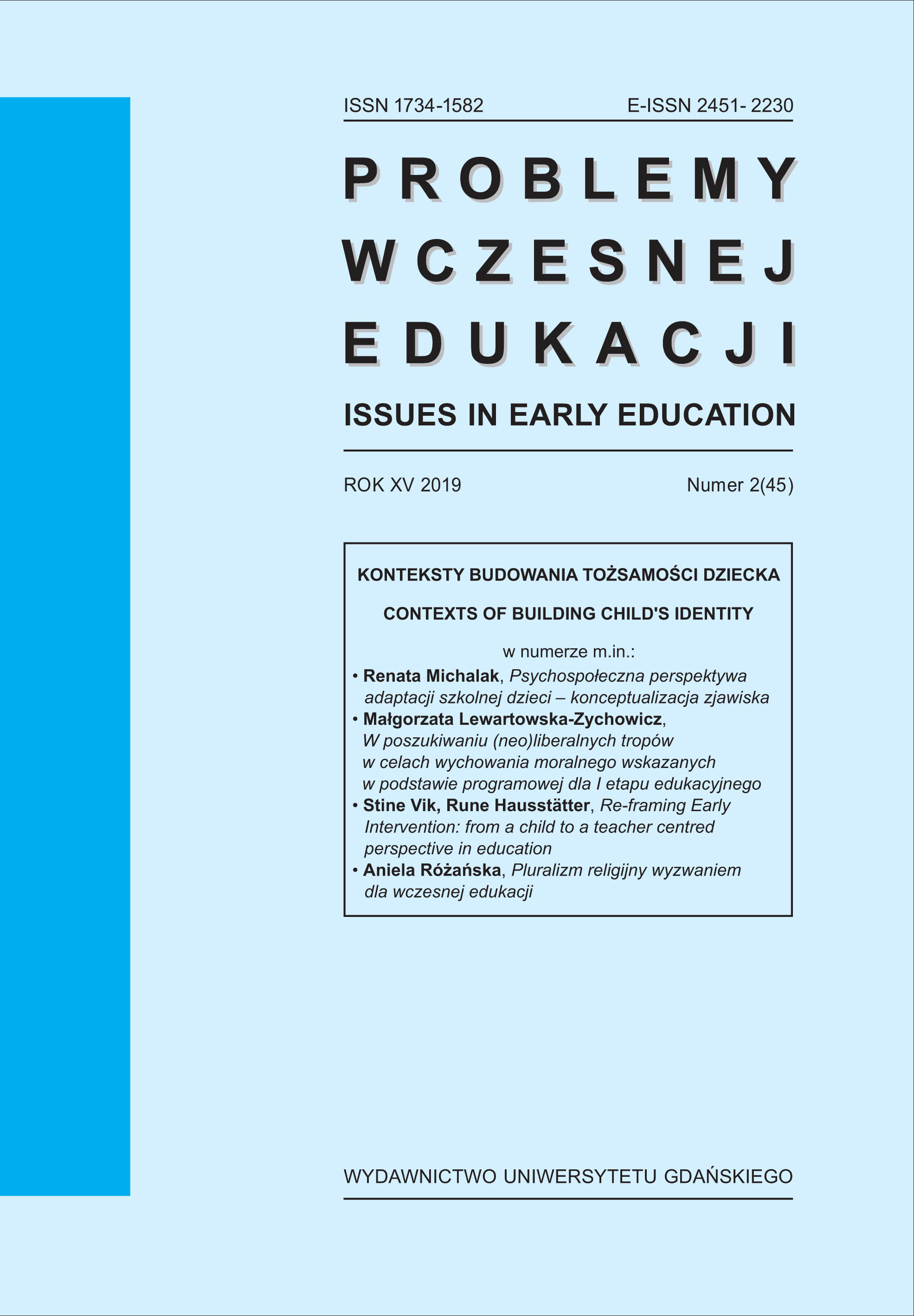Assumptions vs the reality – a case study on developing writing in a foreign language at the level of early school education in Poland and Lithuania
DOI:
https://doi.org/10.26881/pwe.2019.45.10Słowa kluczowe:
edukacja wczesnoszkolna, język angielski, Litwa, Polska, podręczniki, umiejętność pisania w języku obcymAbstrakt
The study aims at providing a potential answer to the question about the extent to which selected currently available ELTs for early school education in Poland and Lithuania allow developing pupils’ writing skills in English described in the most recent academic studies and official regulations at both European (e.g. the CEFR Volume Companion) and national level (e.g. the Core Curriculain the countries in question). The analysis of selected ELTs is performed with the use of a model created by the authors and based on the scientific background and the aforementioned documents. The study demonstrates changes that should be introduced to the content of the examined textbooks in order to make them possibly the most compliant with researchers’ stands and valid recommendations, for instance, (1) it would apparently be beneficial to diversify the types of writing activities included in the chosen ELTs, and (2) pupils could significantly benefit from introducing to the analysed textbooks more writing activities referring to their experience.
Downloads
Bibliografia
Ataska ita apieda bartinę bendrojo ugdy dalykų vadovėlių situaciją (Report on the Current Situation of the Use of School Textbooks) (2014). Vilnius, UPC.
Bogucka M. (2017), Program nauczania języka angielskiego zgodny z podstawą programową z 14 lutego 2017. Szkoły podstawowe, edukacja wczesnoszkolna. Warszawa, Pearson Longman.
Brown J.D., Rodgers T.S. (2002), Doing second language research. New York, Oxford University Press.
Burneikaitė N. et al. (2009), Metodinia ipatari mai užsienio kalbų mokymui pradinėse klasėse. Vilnius, Versus Aureus.
Celce-Murcia M., Brinton D.M., Snow M.A. (2014), Teaching English as a second foreign language. New York, National Geographic Learning.
Corbetta P. (2007), Metodología y técnicas de investigación social. Madrid, McGraw Hill.
Council of Europe/ Centralny Ośrodek Doskonalenia Nauczycieli (2006), Europejskie Portfolio Językowe dla dzieci od 6 do 10 lat. Moja biografia językowa. Warszawa, Centralny Ośrodek Doskonalenia Nauczycieli.
Council of Europe (2016), Collated representative samples of descriptors of language competences developed for young learners aged 7–10 years. Strasbourg, Council of Europe.
Cunningsworth A. (1995), Choosing your coursebook. London, Heinemann.
Cutler L., Graham S. (2008), Primary grade writing instruction: a national survey. “Journal of Educational Psychology”, 100(4).
Davies P., Graham C., Szpotowicz M., Szulc-Kurpaska M. (2017), Super Sparks 3. Oxford, Oxford University Press.
Diaz C., Alarcón P., Ortiz M. (2015), A case study on EFL teachers’ beliefs about the teaching and learning of English in public education. “Porta Linguarum”, 23.
European Language Portfolio (2018),European Centre for Modern Languages of the Council of Europe, http://elp.ecml.at/Understandingtheportfolio/Howdoesitwork/tabid/2839/language/en-GB/Default.aspx, 8.07.2018.
GCFPE (2016), Pradinio ugdymo bendroji programa: užsienio kalbos (The general curriculum framework for primary education: Foreign languages), 2008, last amendment 2016. http://portalas.emokykla.lt/bup/Puslapiai/pradinis_ugdymas_pirmoji_uzsienio_kalba_bendros_nu-ostatos.aspx, 7.07.2018.
Kębłowska M. (2017), Program nauczania języka angielskiego. Kurs dla uczniów klas 1–3 szkoły podstawowej zgodny z nową podstawą programową obowiązującą od 2017 roku. Warszawa, Express Publishing & Egis.
Kusiak-Pisowacka M. (2015), Ewaluacja podręcznika w nauczaniu języków obcych. “Lingwistyka Stosowana”, 14(3).
MEN (2017), Podstawa programowa kształcenia ogólnego. Szkoła podstawowa. Język obcy nowożytny. https://men.gov.pl/wp-content/uploads/2016/11/podstawa-programowa-%E2%80%93-jezyk-obcy.pdf, 7.07.2018.
Pinter A. (2017), Teaching young language learners. Oxford, Oxford University Press.
Plurilingual and intercultural education (2018), European Centre for Modern Languages of the Council of Europe, https://www.ecml.at/Thematicareas/PlurilingualEducation/tabid/1631/Default.aspx, 8.07.2018.
Richard-Amato P. (2003), Making it happen: from interactive to participatory language teaching. Theory and practice. NY, Pearson Education, Inc.
Studzińska I., Mędela A., Kondro M., Piotrowska E. (2017), Program nauczania języka angielskiego zgodny z Podstawą Programową – Rozporządzenie Ministra Edukacji Narodowej z dnia 14 lutego 2017 r. – dla I etapu edukacyjnego, szkoła podstawowa, klasy 1–3. Warszawa, Macmillan.
Swandi I.S.B., Netto-Shek J.A. (2017), Teaching writing at primary levels. Indonesian Journal of Applied Linguistics, 7(1), https://ejournal.upi.edu/index.php/IJAL/article/view/6852/0, 8.07.2018.
The Ministry of Education and Science (2016), Pradinio ugdymo bendroji programa(The general curriculum framework for primary education), 2008, last amendment 2016. The Ministry of Education and Science, Lithuania. https://www.sac.smm.lt/wp-content/uploads/2016/01/ugdpr_1priedas_ pradinio-ugdymo-bendroji-programa.pdf, 8.07.2018.
Thomson T., Simmons N. (2014), Family and Friends. Oxford, Oxford University Press.
Ur P. (2012), A course in English language teaching. Cambridge: Cambridge University Press.
Wilkinson D., Birmingham P. (2003), Using research instruments: a guide for researchers. NY, Routledge Falmer.

 Uniwersyteckie Czasopisma Naukowe
Uniwersyteckie Czasopisma Naukowe





